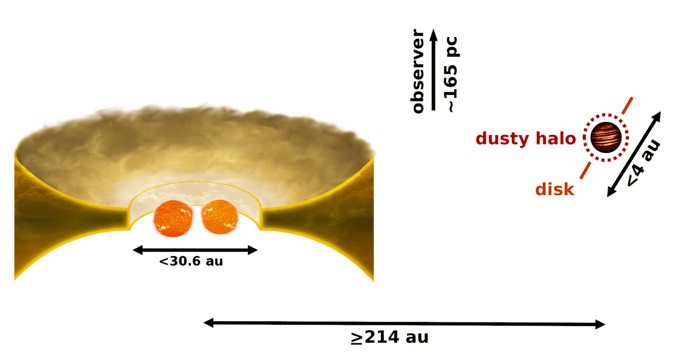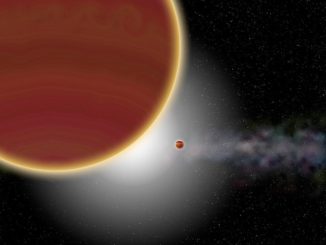
A team of astronomers led by Dutch researchers at Leiden University have found a small, mysterious companion in a binary star system they were observing with the Very Large Telescope. They suspect it is a baby planet, albeit a big one, with a possible dust disk of its own.
In short, it’s likely still growing. Whatever it is.
“The most exciting part is that the light of the companion is highly polarised,” said Christian Ginski, lead author of a paper describing the discovery. “Such a preference in the direction of polarisation usually occurs when light is scattered along the way. We suspect that the companion is surrounded by his own dust disc.”
The “tricky part,” he added, “is that the disc blocks a large part of the light and that is why we can hardly determine the mass of the companion. So it could be a brown dwarf but also a super-Jupiter in his toddler years. The classical planet-forming-models can’t help us.”

The companion orbits the binary system CS Cha some 538 light years from Earth in the southern constellation Chameleon. After spotting the mysterious body, Ginski and his team went back through the archives and found a much fainter version in photos taken 19 years ago by the Hubble Space Telescope. It also showed up in 11-year-old images taken by the VLT, proving the companion is part of the binary system.
The surprise detection of the smaller body was made using the SPHERE instrument on the Very Large Telescope. SPHERE can directly image exoplanets and dust disks by capturing reflected polarised light.



